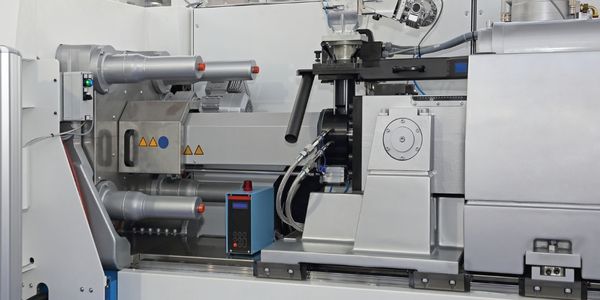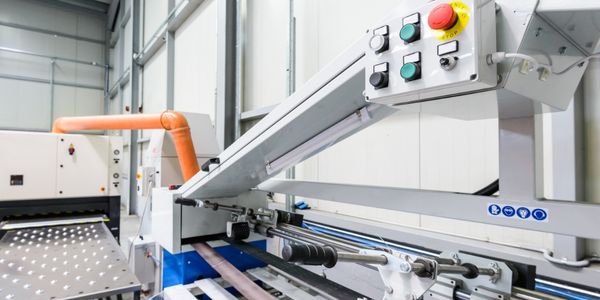Customer Company Size
Mid-size Company
Region
- America
Country
- United States
Product
- Intellect SaaS Business Process Management (BPM) platform
Tech Stack
- SaaS
Implementation Scale
- Enterprise-wide Deployment
Impact Metrics
- Cost Savings
- Productivity Improvements
Technology Category
- Platform as a Service (PaaS) - Application Development Platforms
Applicable Functions
- Discrete Manufacturing
Use Cases
- Manufacturing System Automation
Services
- Cloud Planning, Design & Implementation Services
About The Customer
National Signs, founded in 1992, is an internationally recognized sign manufacturer. The company is a total solution provider managing projects from initial proposal to the final installation tracking every detail of the signage process, allowing their clients to stay focused on their business at hand. National Signs boasts a roster of global clients, across many industries from healthcare, to financial institutions, house of worship and many others. The company takes pride in their high-quality products and services and a team that is dedicated to each project’s success.
The Challenge
National Signs, an internationally recognized sign manufacturer, was facing challenges due to its global expansion. The company's manual processes were not effective for the growing workforce and increased production. The existing systems and processes were not able to remove barriers that would allow employees to communicate anywhere, anytime, working together across the organization. One of the main challenges was tracking orders across the organization. With constant changes on orders, the production team’s manual process of writing jobs on pieces of paper as well as printing out drawings and physically handing out to each person their specific job for the day, not only wasted time, but created confusion and increased printing costs.
The Solution
National Signs first explored an MS Excel solution which was discarded when they realized the complexity and confusion that a spreadsheet solution would cause. Hussain Ali, National Signs’ IT Manager, was then introduced to the Intellect SaaS Business Process Management (BPM) platform through one of Intellect’s partners. Hussain was immediately impressed and convinced it was the right solution for National Signs. After presenting a custom demonstration of their process to senior management, it quickly became apparent that it was the right solution for the right price. With Intellect’s SaaS BPM platform, important benefits like transparency and collaboration would be easily realized, unlocking opportunities and sharing best practices across the organization. The trigger for Business Process Management Software became apparent with accelerated global expansion and a new company strategy predicated on sharing knowledge while communicating effectively within the organization.
Operational Impact
Quantitative Benefit

Case Study missing?
Start adding your own!
Register with your work email and create a new case study profile for your business.
Related Case Studies.

Case Study
Plastic Spoons Case study: Injection Moulding
In order to meet customer expectations by supplying a wide variety of packaging units, from 36 to 1000 spoons per package, a new production and packaging line needed to be built. DeSter wanted to achieve higher production capacity, lower cycle time and a high degree of operator friendliness with this new production line.

Case Study
Robot Saves Money and Time for US Custom Molding Company
Injection Technology (Itech) is a custom molder for a variety of clients that require precision plastic parts for such products as electric meter covers, dental appliance cases and spools. With 95 employees operating 23 molding machines in a 30,000 square foot plant, Itech wanted to reduce man hours and increase efficiency.

Case Study
Fully Automated Visual Inspection System
Tofflon has developed a fully automatic machine that uses light to inspect vials, medicine bottles, or infusion containers for glass fragments, aluminum particles, rubber grains, hairs, fibers, or other contaminants. It also detects damaged containers with cracks or inclusions (microscopic imperfections), automatically removing faulty or contaminated products. In order to cover all production processes for freeze-dried pharmaceuticals, Tofflon needed to create an open, consistent, and module-based automation concept.

Case Study
SAP Leonardo Enabling Rocket Science
At times, ULA has as many as 15 different operating systems dedicated to overlapping processes, such as rocket design, testing, and launch. Multiple systems created unnecessary costs and unwanted confusion among workers at offices, factories, and launch sites in different location. In order to improve collaboration and transparency during vital activities that directly influence mission success, ULA wanted to improve data sharing and streamline manufacturing processes.

Case Study
IIC Smart Manufacturing Connectivity for Brown-field Sensors
The discrete manufacturing domain is characterized by a strictly hierarchical structure of the automation systems, commonly referred to as the automation pyramid. Data acquired by a sensor typically flows through an IO-module into a Programmable Logic Controller (PLC) which manages the local real-time control system. As all process data are concentrated in the PLC, re-programming the PLC and thus, implementing interfaces to access these data appear to be the natural choice to transfer them to the IT system. However, for brownfield installations this choice has proven impracticable for the following two reasons:In brownfield facilities, PLC usually operate within a once-specified environment and are rarely re-programmed. That is why the active staff is often not familiar with the code and lacks of the competence to modify the existing implementation in a reasonable amount of time.Furthermore, for cost reasons, any PLC was selected to exactly match the requirements of the environment within which it was intended to operate. That is why it cannot be assumed that a PLC will be able to support additional tasks such as communicating data through additional interfaces.

Case Study
Smart Factory Solutions for Tobacco Industries: Bridging the Manufacturing Generation Gap and Improving Operational Efficiency
The tobacco industry, represented in this case by British American Tobacco (BAT), is facing a decline in cigarette volumes worldwide. This decline has led to an increased emphasis on efficient supply chains and optimized production processes. The industry is also grappling with the need for agile production facilities and the integration of Industry 4.0 to accommodate diverse production requirements. BAT, in particular, was seeking a factory solution to automate their product control processes, from the transportation of tobacco and cigarette paper to the placement on cigarette machines and the packing conveyor. The company also needed to support the continuous use of legacy equipment, such as relay-controlled cigarette machines dating back to the 90s and AMK servo drive systems, to sustain production levels at speeds of 8000 to 16000 pieces per minute. Furthermore, changing regulatory guidelines necessitated flexibility in labeling requirements.







